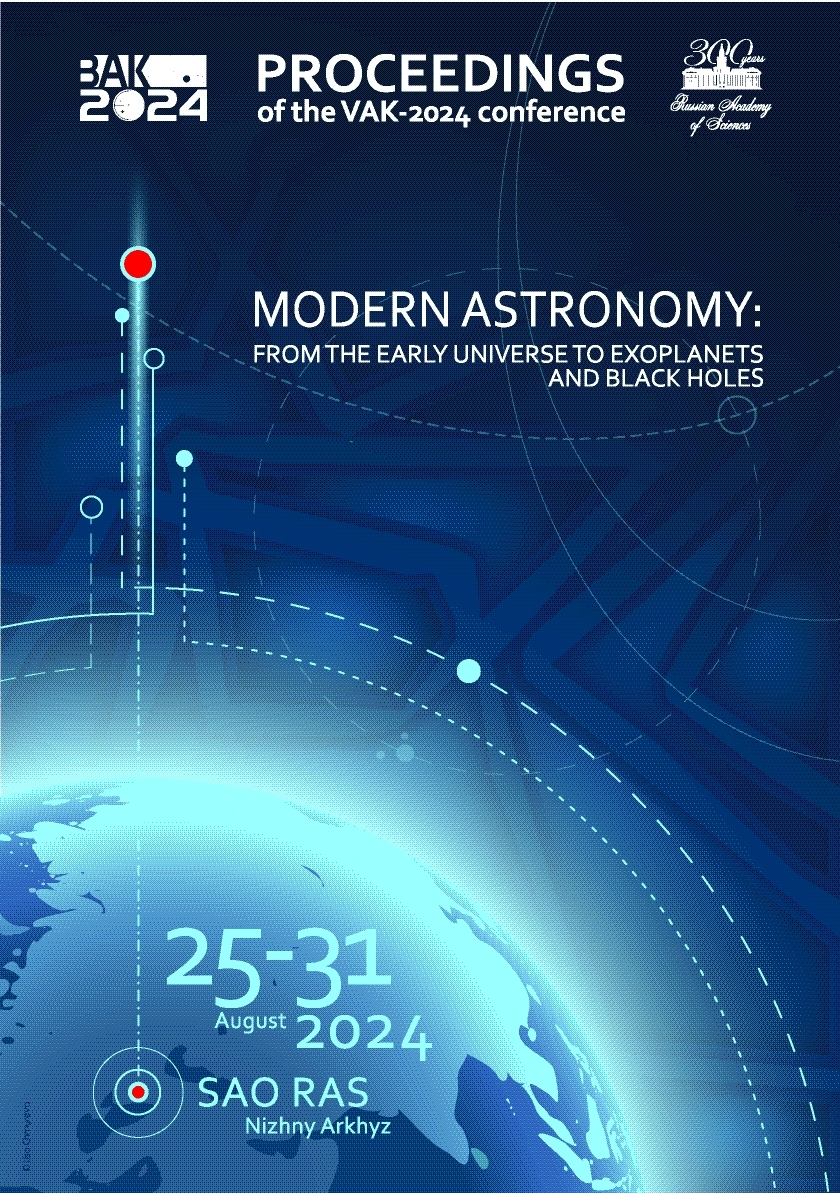UDC 53
UDC 520
UDC 521
UDC 523
UDC 524
UDC 52-1
UDC 52-6
CSCSTI 41.00
CSCSTI 29.35
CSCSTI 29.31
CSCSTI 29.33
CSCSTI 29.27
CSCSTI 29.05
Russian Classification of Professions by Education 03.06.01
Russian Classification of Professions by Education 03.05.01
Russian Classification of Professions by Education 03.04.03
Russian Library and Bibliographic Classification 2
Russian Library and Bibliographic Classification 223
Russian Trade and Bibliographic Classification 614
Russian Trade and Bibliographic Classification 6135
BISAC SCI004000 Astronomy
BISAC SCI005000 Physics / Astrophysics
For a qualitative description of the oscillations of the Earth's pole, a simplified analytical model is derived, showing the presence of the frequency of periodic gravitational external action in the coordinates of the pole. As part of the refinement of the forecast of the pole movement, long-period impacts on the pole from the Moon were found and identified. Among the main characteristics of the Moon's orbit, the rotation of the node of the lunar orbit and the rotation of the perigee were chosen from the project The JPL Horizons 2024. The study used a number of C01 observational and measurement data from the International Earth Rotation Service (IERS). The observations were processed over a 122-year interval, starting in 1900 and up to 2023. In this work, as a result of numerical processing of C01 observational data, it was possible to identify quasi-stationary harmonics with the frequency of rotation of the node of the lunar orbit (as well as with a doubled frequency) and with the frequency of rotation of the perigee. The found harmonics are phase-coordinated with the positions of the node of the lunar orbit and its perigee. This confirms the existence of a mechanism of gravitational influence of the Moon (as well as other massive bodies of the Solar System) on the fluctuations of the Earth's pole. The amplitudes of these harmonics show the scale of the gravitational influence from the Moon.
astrometry; celestial mechanics; Moon; Earth
1. Akulenko L.D., Kumakshev S.A., and Markov Yu.G., 2005, Doklady Physics, 50, 2, p. 106
2. Kumakshev S.A., 2018, Mechanics of Solids, 53, 2, p. 159
3. Perepelkin V.V., Rykhlova L.V., and Filippova A.S., 2019, Astronomy Reports, 63, 3, p. 238
4. Perepelkin V.V., Rykhlova L.V., and Wai Yan Soe, 2022, Astronomy Reports, 66, 1, p. 80







